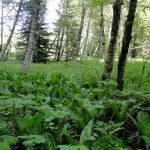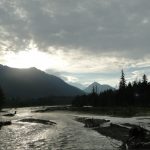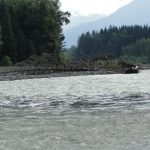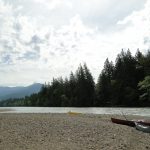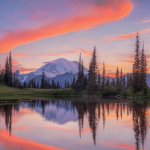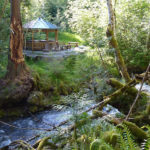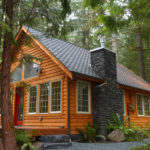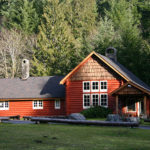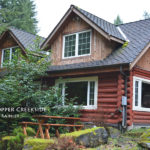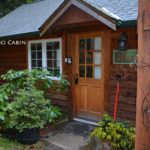Indian Bar
Oh Indian Bar. To be clear, this hike is not for the weak or weary. This hike is a hard stretch of the Wonderland, with 14.5 miles round-trip and a 2,900 foot elevation gain on the way in (800 on the way out). Is it worth it? Absolutely. A hundred times over.
In an interview with the backcountry carpenter at Mt. Rainier, see blog here: (http://mtrainierblog.com/2013/07/07/stories-from-the-mountain-meet-mt-rainiers-backcountry-carpenter/) he said that Indian Bar is one of his favorite places in the park. Furthermore, he said that he had never NOT seen a bear at Indian Bar (sorry for the double negative), and sightings included a mother bear with three cubs, and a six-bears-in-one-day day. Bears, wildflowers, dozens of waterfalls, and a babbling brook all in a private, wide-open valley. YES PLEASE!
Indian Bar can be reached from two different access points – beginning from Box Canyon or from Fryingpan Creek Bridge (taking the the Summerland Trail from the White River side of the park). I’ve done the Box Canyon route, and will focus on this route for all intensive purposes. The Box Canyon trailhead is on Stevens Canyon Road, 11 miles east of the Longmire-Paradise Road. The gravel trail (with a sign) is directly across from the parking lot.
The first mile-and-a-half allow hikers to pass alongside Nickel Creek and another small creek with a mild grade. The next mile and a half are tough – there is a lot of elevation grade without much reprieve, and the area is all forested – not allowing for scenic overlooks until the 3-mile mark. At three miles, hikers will reach the crest of the Cowlitz Divide, which hikers will follow for the next four-and-a-half miles. Off the right hikers can settle themselves into a moderate sized field of wildflowers with nice views southwards, to drink and eat trail mix before continuing north and climbing onward.
As hikers continue onwards on the ridge, the trail gradually opens up. Mt. Rainier will start to show its southeast side ahead and to the left through the trees, and the trail will follow the contours of the ridge, at times quite steep, but allowing hikers to rest on some flat stretches, and enjoy the wildflower meadows as they widen and beckon. Finally, the trail widens to show Mt. Rainier in all of its glory, with a colorful valley in the foreground. This is the high point of the trail at 5,914′ and from here, hikers will descend 800′ into the valley where Indian Bar sits in a huge open meadow.
The Ohanapecosh river splits the meadow in two, and the Indian Bar shelter beautifully sits to the west side of the river, its open side facing the flowing water. Animals frequent the meadows north of the shelter and camping areas, and in late spring there are many waterfalls pouring down the lava cliff faces high above the valley. The backcountry camping area is southeast of the shelter about 100 feet, and sits right above Wauhaukaupauken Falls, which are small but beautiful.
Once you’ve set up your camp and rested a bit, it is recommended to clamber up the hill above the camp. Elk sightings are almost guaranteed when the animals are in rut in September. Remember always to give animals plenty of space. Bull elk can be extremely aggressive in mating season, and you should take care never to surprise a black bear. Take extra precautions around the black bear if there are cubs around. Never get between a mother and her cub, and make sure to make plenty of noise when hiking at dusk and dawn, so as not to catch a bear unaware and on the defense.
This hike is generally snow-free from late July – September, and the wildflowers are out in full effect late-July to mid-August. If hikers arrange for a car drop-off, the Box Canyon hike can be combined with the Summerland trail to the trailhead at Frying Creek bridge (another 8.7 mile hike), for a one-way 17 mile hike through some of Mt. Rainier’s most beautiful country.
If you choose to do the Box Canyon trail in and out of Indian Bar, it is most definitely recommended as a two-day hike, so make sure that you apply for the appropriate backcountry camping permit, which must be arranged in person. Wilderness Camping and Climbing permits are available at the Longmire, White River, and Carbon River Wilderness Information Centers (WICs) and at the Paradise Climbing Information Center during the summer season. Permits are also available at visitor centers.

